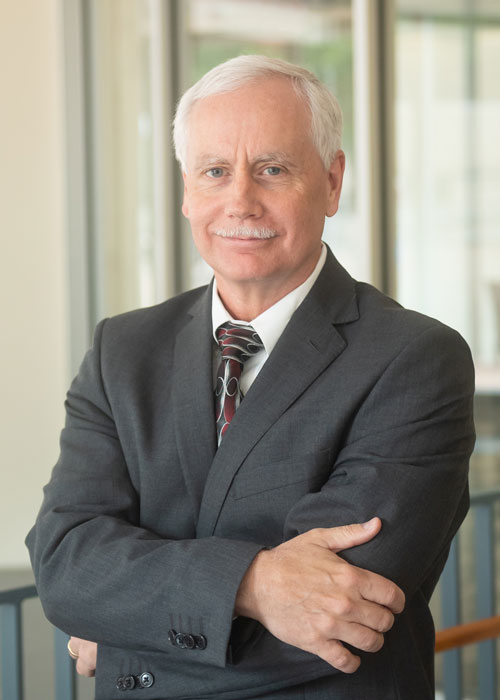Biography
Dr. Mark J. Zoran was appointed as dean of the Texas A&M University College of Arts and Sciences, effective Jan. 1, 2024. He is a distinguished leader and educator and brings a vision for the future and preeminence of the College of Arts and Sciences that will expand and strengthen its reputation for excellence in student success, research impact and as the vital academic foundation at Texas A&M.
Dr. Zoran is a professor of biology and neuroscience and had been serving as interim dean in the College of Arts and Sciences since Aug. 1, 2023. Prior to that, he served as the executive associate dean in arts and sciences since the college's creation in September 2022, and in the same role in the former College of Sciences since 2018. Dr. Zoran also served as the associate dean for graduate studies and faculty affairs in the former College of Science and as acting associate provost for graduate and professional studies from 2017-18.
A native of DePue, Illinois, Dr. Zoran earned a master’s degree in biological sciences from Illinois State University in 1981 and a doctorate in zoology/neurobiology from Iowa State University in 1987. He completed postdoctoral research at Iowa State prior to joining the Department of Biology at Texas A&M in 1991, where he also is an affiliated faculty member with the Center for Biological Clocks Research and the Texas A&M Institute for Neuroscience.
Research Interests
Cellular and Developmental Neurobiology
Research Summary My laboratory studies cellular mechanisms governing the formation of specific synaptic connections between neurons and their targets. These mechanisms include cell-cell recognition and target-dependent induction of the presynaptic secretion machinery. Some of our studies investigate synapse formation of identified motoneurons of the American pond snail, Helisoma trivolvis , following nerve injury in vivo and in cell culture. Since the synapse is the site of most interneuronal communication within the nervous system, an understanding of the development, regeneration and plasticity of these connections is crucial to an ultimate appreciation of neural integration and brain function.
Neural Morphallaxis
We also study a rare form of regeneration called neural morphallaxis in the annelid worm, Lumbriculus variegatus. This organism is ideal for examining behavioral, physiological, cellular and molecular mechanisms of development, regeneration and systems-level plasticity. We have defined the neural correlates of escape reflexes, which are reconfigured during morphallaxis. Recently we have begun investigations of synaptic molecules up-regulated specifically during morphallaxis. This model system is emerging as a valuable educational tool in the science classroom.
Educational Background
- Ph.D., 1987, Iowa State University, Zoology, Neurobiology.
- M.S., 1981, Illinois State University, Biological Sciences.
- B.A., 1979, Augustana College, Biology.
Selected Publications
- Lybrand, ZR, Martinez-Acosta, VG, Zoran, MJ. Coupled sensory interneurons mediate escape neural circuit processing in an aquatic annelid worm, Lumbriculus variegatus. J Comp Neurol. 2020;528 (3):468-480. doi: 10.1002/cne.24769. PubMed PMID:31502251 .
- Agrawal, P, Houl, JH, Gunawardhana, KL, Liu, T, Zhou, J, Zoran, MJ et al.. Drosophila CRY Entrains Clocks in Body Tissues to Light and Maintains Passive Membrane Properties in a Non-clock Body Tissue Independent of Light. Curr Biol. 2017;27 (16):2431-2441.e3. doi: 10.1016/j.cub.2017.06.064. PubMed PMID:28781048 .
- Islam, R, Nakamura, M, Scott, H, Repnikova, E, Carnahan, M, Pandey, D et al.. The role of Drosophila cytidine monophosphate-sialic acid synthetase in the nervous system. J Neurosci. 2013;33 (30):12306-15. doi: 10.1523/JNEUROSCI.5220-12.2013. PubMed PMID:23884937 PubMed Central PMC3721841.
- Zoran, MJ, Biljana, SS, Ivana, MP. Relocation of ventricular catheter trough ventriculostomy due to congenital unilateral hydrocephalus: Nine year follow-up. Surg Neurol Int. 2011;2 :141. doi: 10.4103/2152-7806.85982. PubMed PMID:22059136 PubMed Central PMC3205507.
- Lybrand, ZR, Zoran, MJ. Rapid neural circuit switching mediated by synaptic plasticity during neural morphallactic regeneration. Dev Neurobiol. 2012;72 (9):1256-66. doi: 10.1002/dneu.20993. PubMed PMID:22021133.


